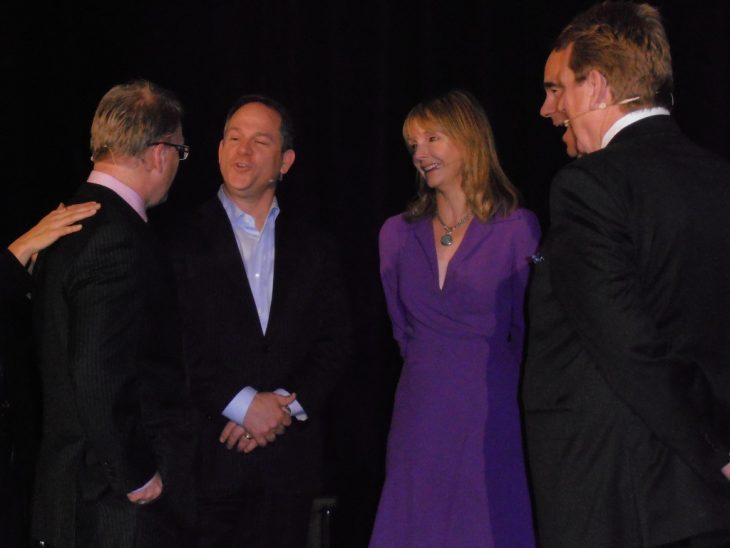
TORONTO – There is no shortage of people who believe, thanks to our exploding new media world, that: “Television is dead”, or some variation of that theme.
At the TV Bureau of Canada’s TV Day, held Thursday at the Carlu in Toronto, broadcasters, agencies and media buyers were given ample reasons to believe that not only is TV not dead, it has never been stronger. Of course, one would expect the TV Bureau and all the broadcasters to scream that from the rooftops because that’s their business, however, the numbers and the work being done, seem to back the notion that TV is still the healthy mass media gorilla it always was.
In fact, thanks to social media, you can make a case that the gorilla has no equal.
Yes, the world has become big users of Facebook and Twitter and many other applications on the web in general and it’s long been thought that time spent with the web was time spent away from TV, but that isn’t really the case. During evening prime time hours, millions of people are still spending time with their favourite TV shows, but their laptops, smartphones or tablets are online with them so they can comment on what they see – be it advertising or entertainment.
It’s well known the most-tweeted about subject during the traditional TV prime time is what’s on television.
What’s really cool for the broadcaster is that these online expressions of interest or engagement with a brand (be it a show or a product or service advertised within that show) are very attractive to the broadcasters because they can point to a far more certain return on investment when it comes to ad dollars spent by their clients than they could in years past.
Deb Roy, CEO of Bluefin Labs, a research and analytics company which tracks social media interaction with television, noted during his opening session at TV Day the shift among big advertisers is already well under way. For example, Coca-Cola CMO Joe Tripodi has said his company is “looking more towards expressions of brands from consumers than impressions of ads on them,” paraphrased Roy.
And popular television programming is delivering that. Roy pointed to a recent ad campaign where Doritos counted 60 million “earned impressions”, that is, people who tweeted about seeing the new Doritos taco shell campaign during Glee or reported or retweeted that their friends did. And those “earned impressions are the most precious,” he added.
Far from showing that these new ways of communicating and consuming media will hurt television, they are actually building up broadcast TV networks, said Bell Media CEO Kevin Crull during the executive panel session which followed in the morning. “The strength of television as a medium has never been better,” he said noting that new media is “not cannibalizing viewing and not really changing the importance of live viewing.”
Viewership is up across the board for the most popular shows as panelist and CBC executive vice-president English Services Kirstine Stewart confirmed by pointing out CBC English TV had just completed its highest-rated winter season ever. Just like “video didn’t kill the radio star,” she explained, “it helped reinvent what radio is”, with the internet, “people are just engaging with television in a different way.”
Rogers Media president Keith Pelley took delegates into his own home one recent evening where a Jays game was on television and his son was using a laptop to display Jose Bautista’s stats, his wife was reading an e-book and his daughter was watching iCarly on her iPad. “People are consuming media completely differently than they did and multiplatform is critical,” but in the end “it all leads back to television.”
Besides, he said, if he hadn’t been able to see the first few innings of that game on his smartphone before he got home, would he have even turned the game on when he got there? Being available on that small screen is clearly additive in this instance.
TVA’s president and CEO Pierre Dion noted another change in the landscape when it comes to producing his own content, pointing to the latest season of Star Academie. Back in 2009, the last time TVA put together Star Academie, the digital, social media and product integration discussions took part late in the production cycle. Now, he noted, all of that is completely integrated as the show is built.
Star Academie has 100,000+ Facebook followers and much content online and on demand that doesn’t make it to air, all of which is sold against advertising. However, more than half of the voting is done via the TV remote. “TV is still at the heart of the convergence model,” he explained, saying that 2.4 million Quebeckers watched the last episode on Sunday.
Dion also noted that he is training everyone on staff at TVA to treat each show as a brand unto itself, for people to think beyond the content that makes it on TV and what can be done to further monetize each of its own shows. “Each program now are brands with a 360-degree approach,” he said. “We need to find a way to monetize the new platforms.
“But what hasn’t changed is you need a big show to drive it to multiplatform.”
Pictured from left to right are Rogers Media's Keith Pelley, Bell Media's Kevin Crull, CBC's Kirstine Stewart, TVA's Pierre Dion and Shaw Media's Paul Robertson just before their TV Day panel. Greg O'Brien photo.



